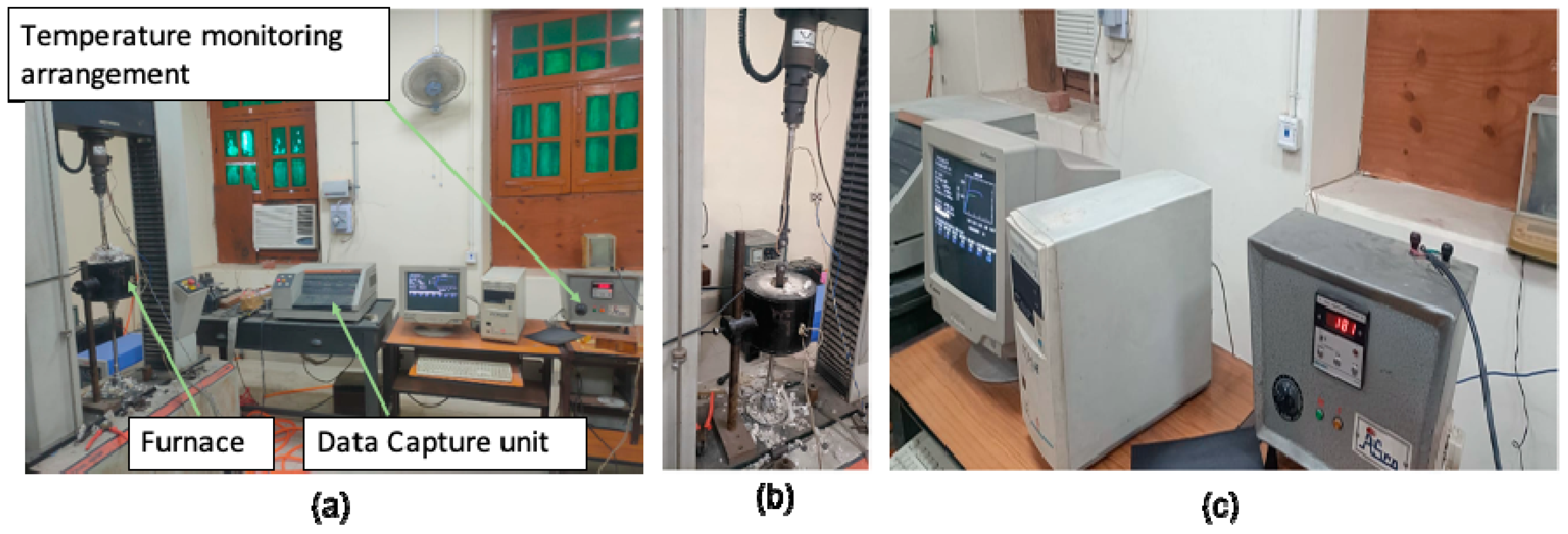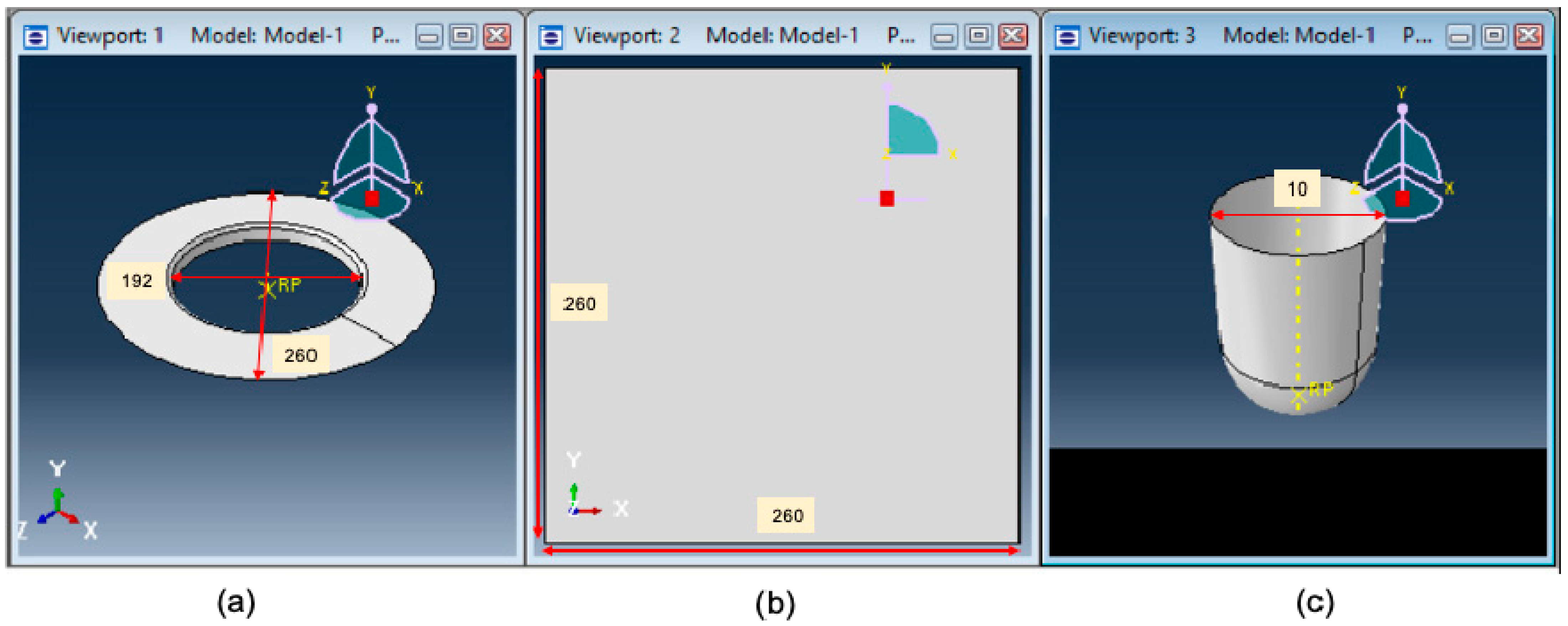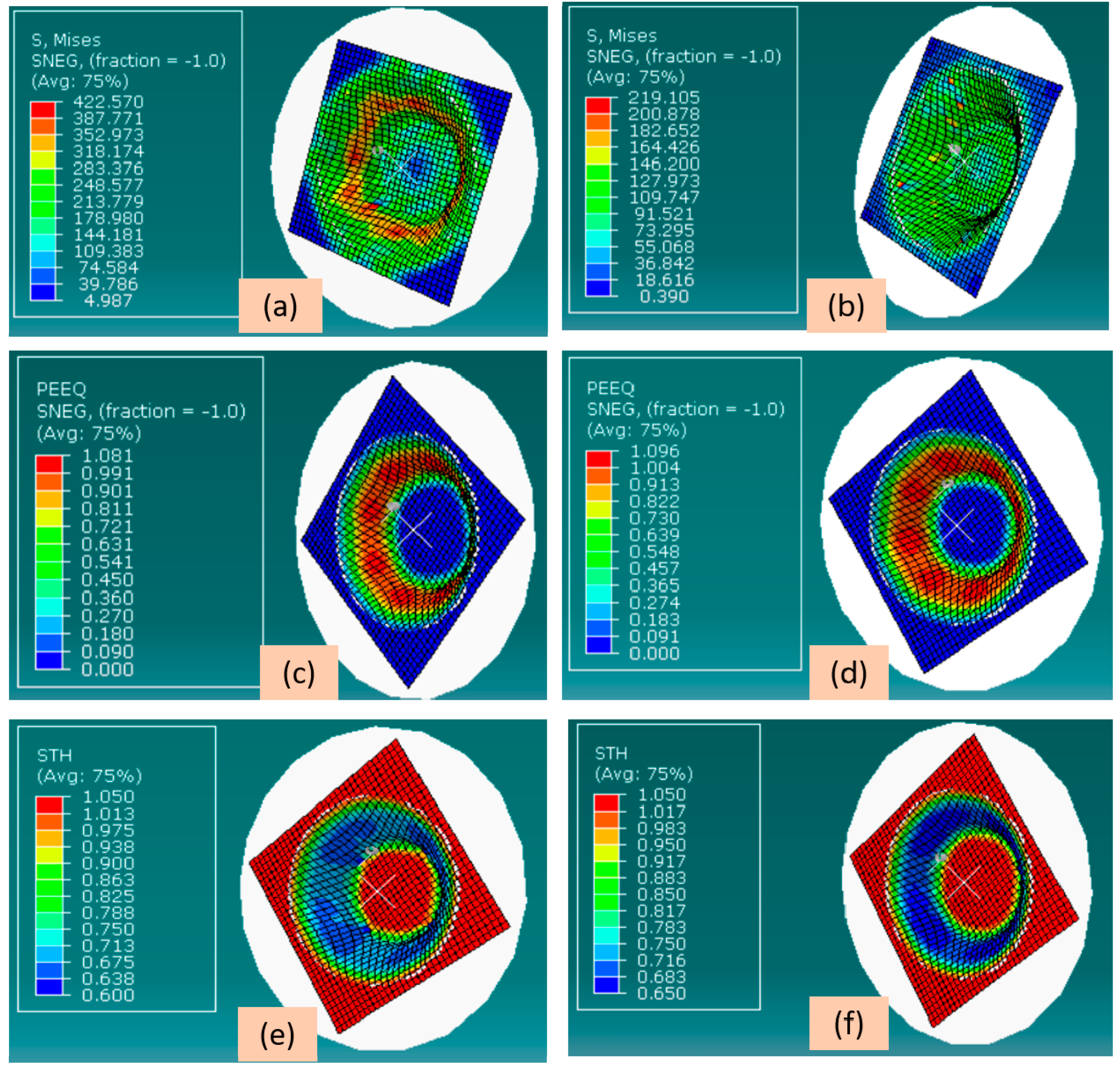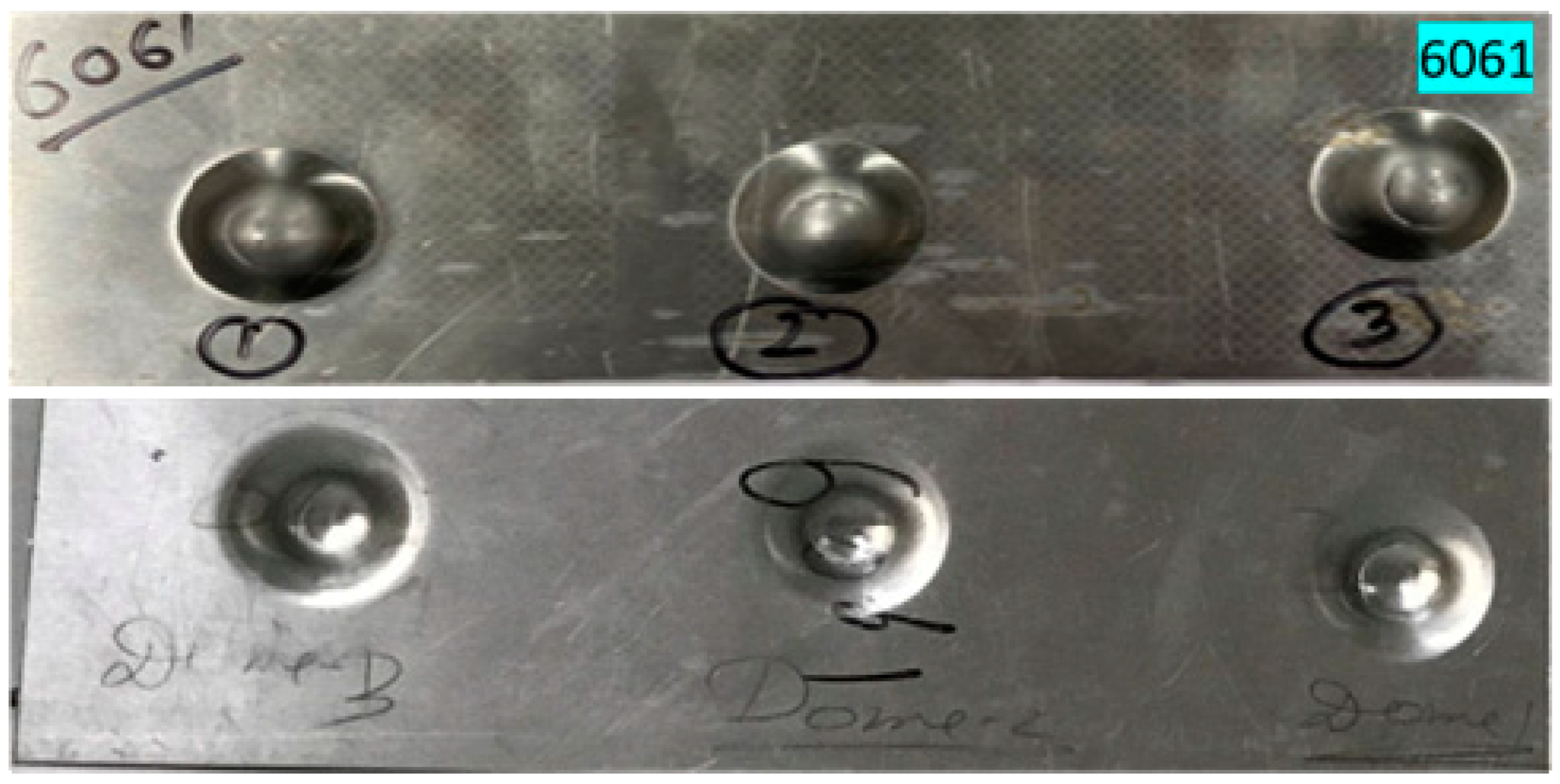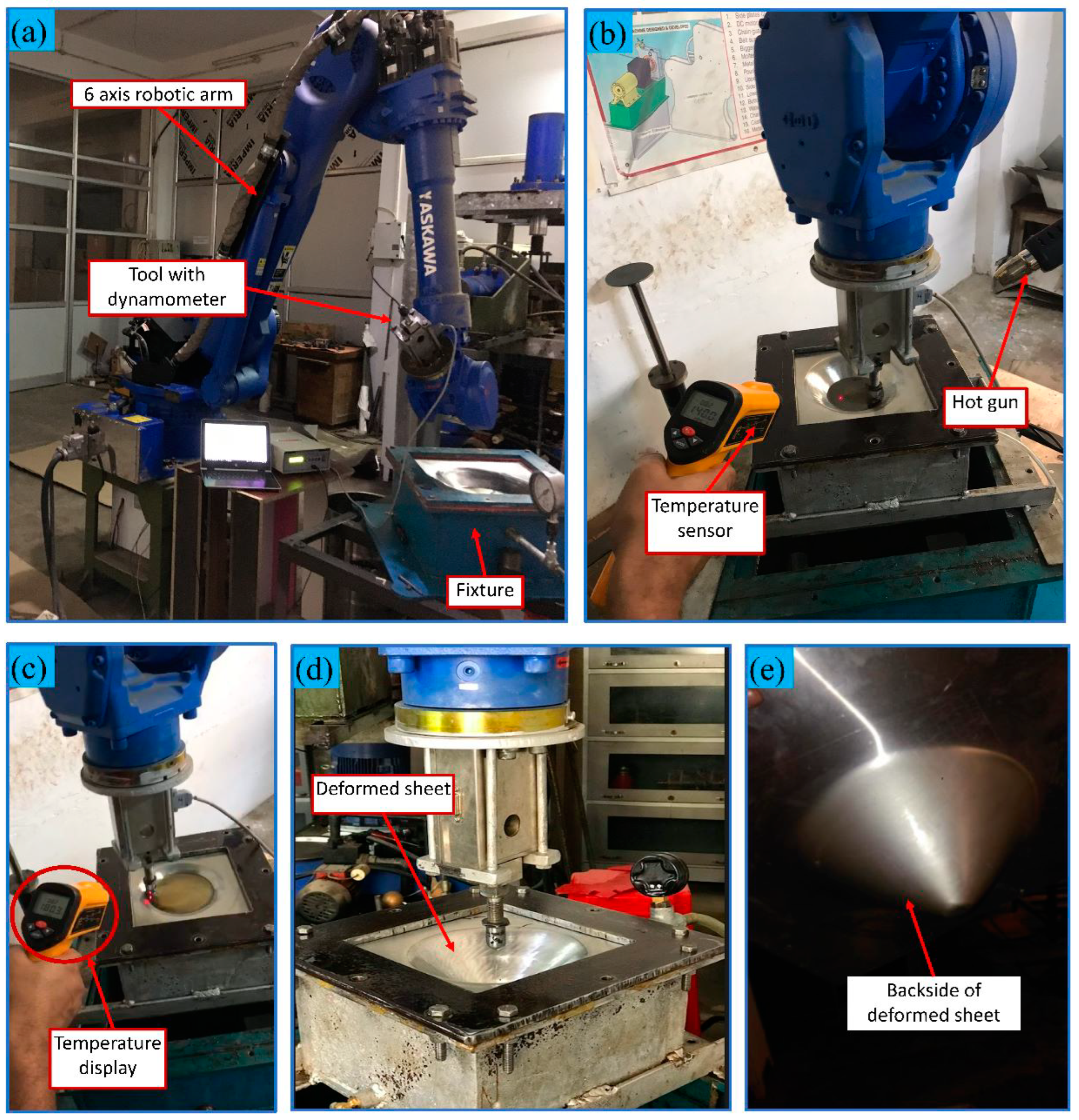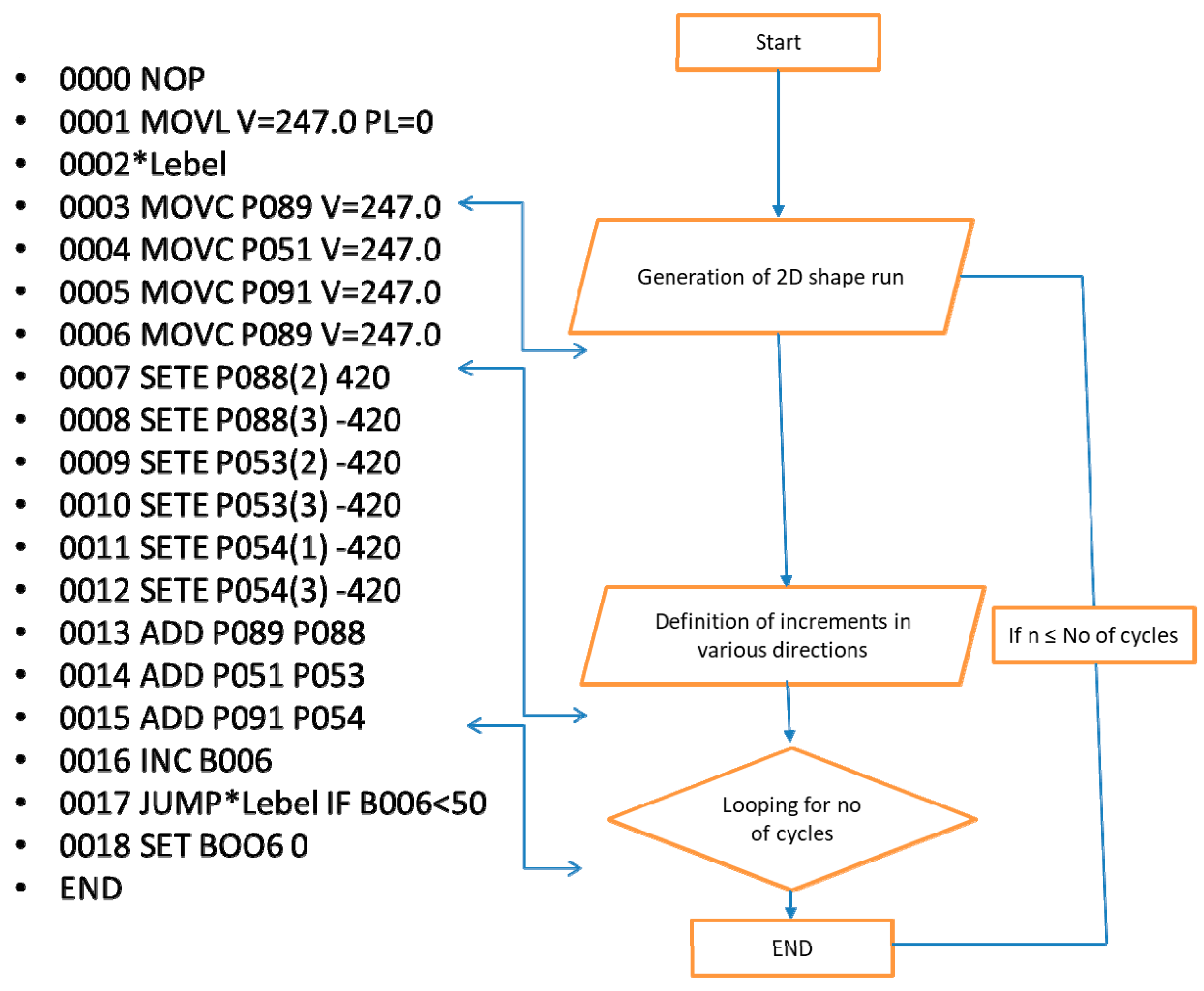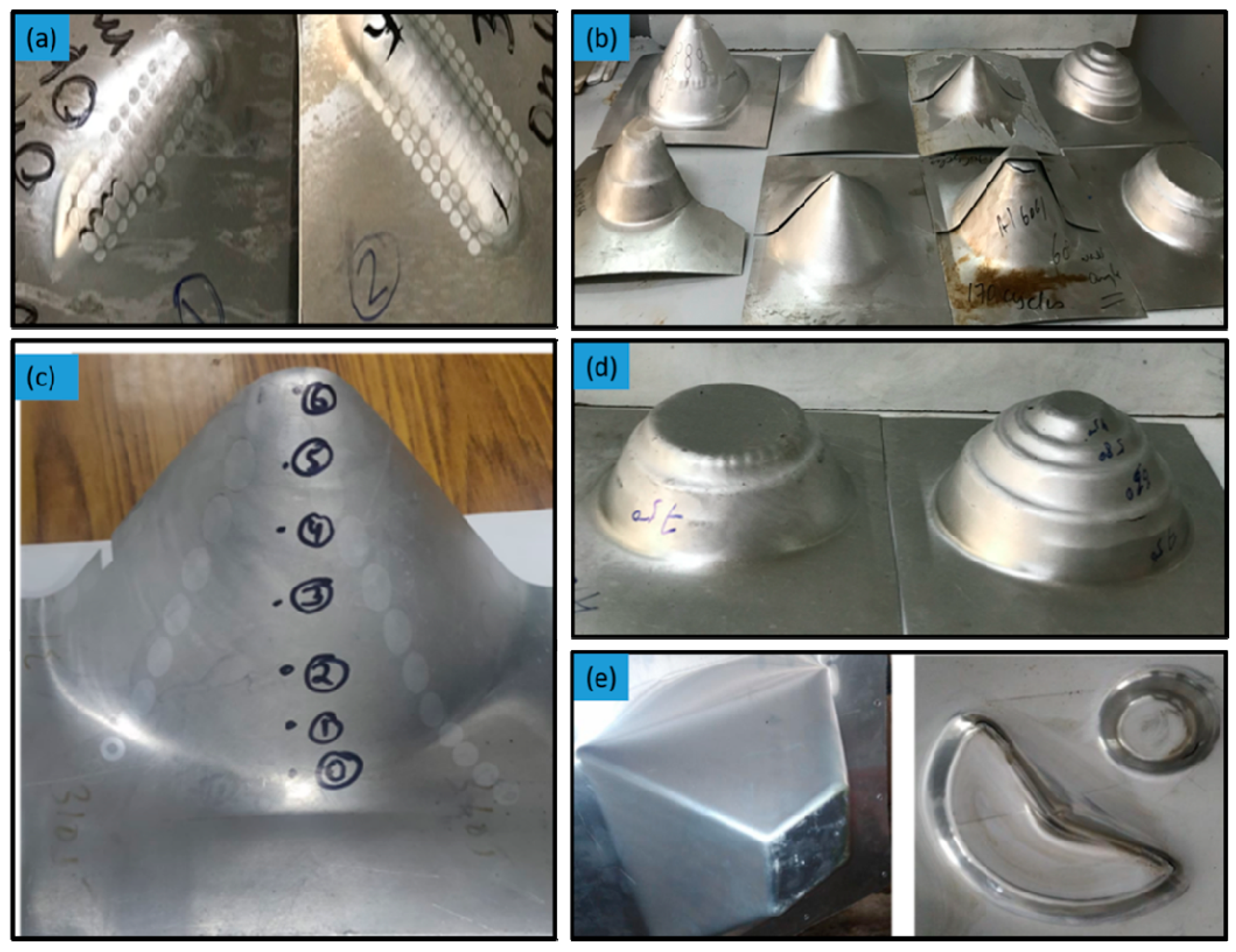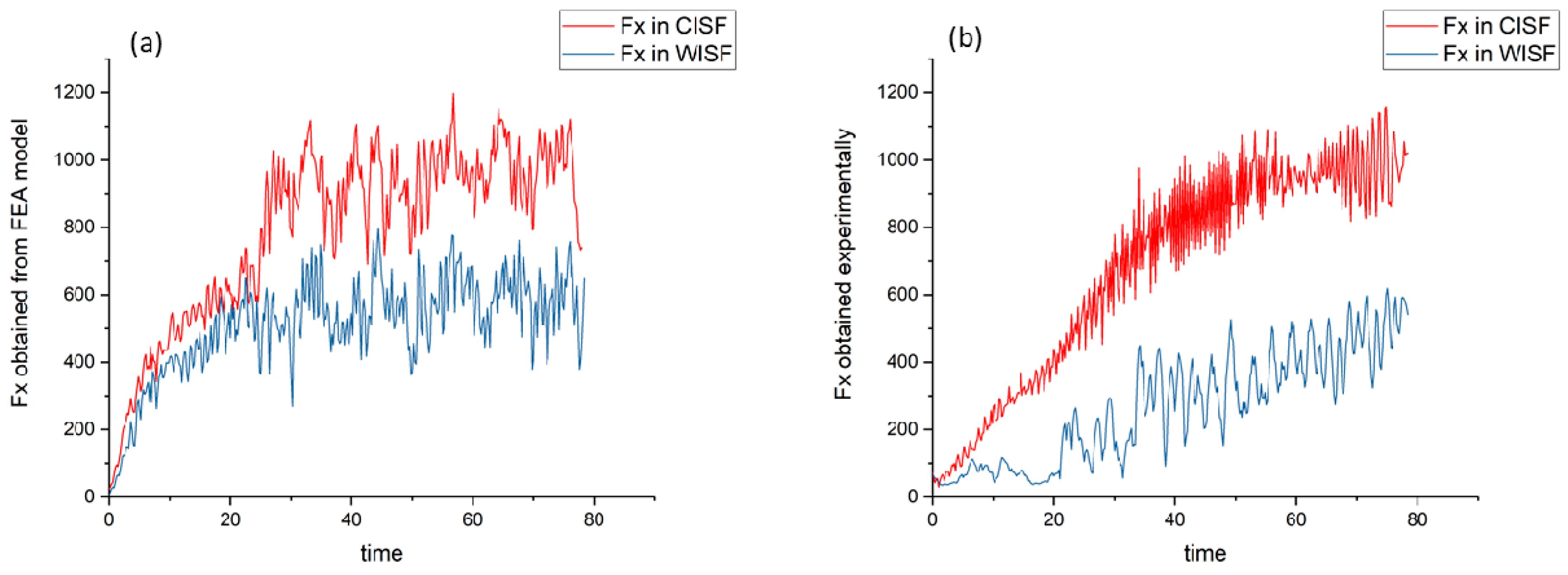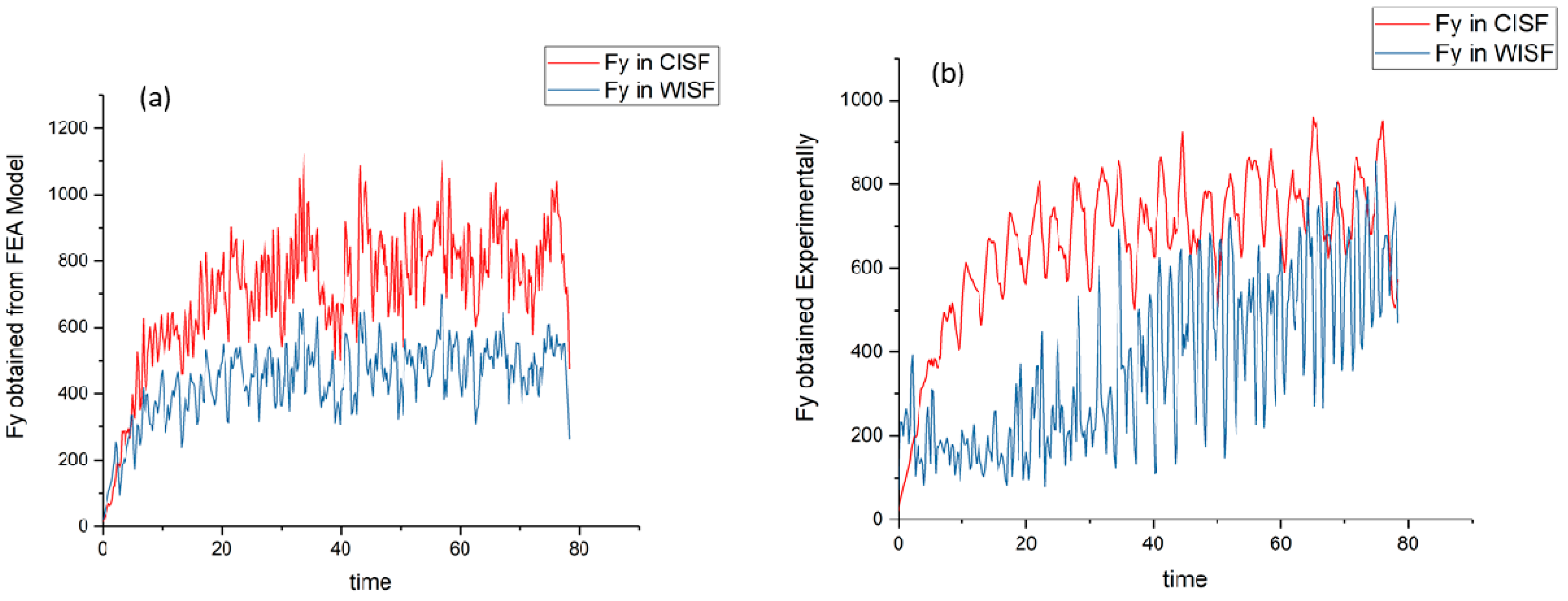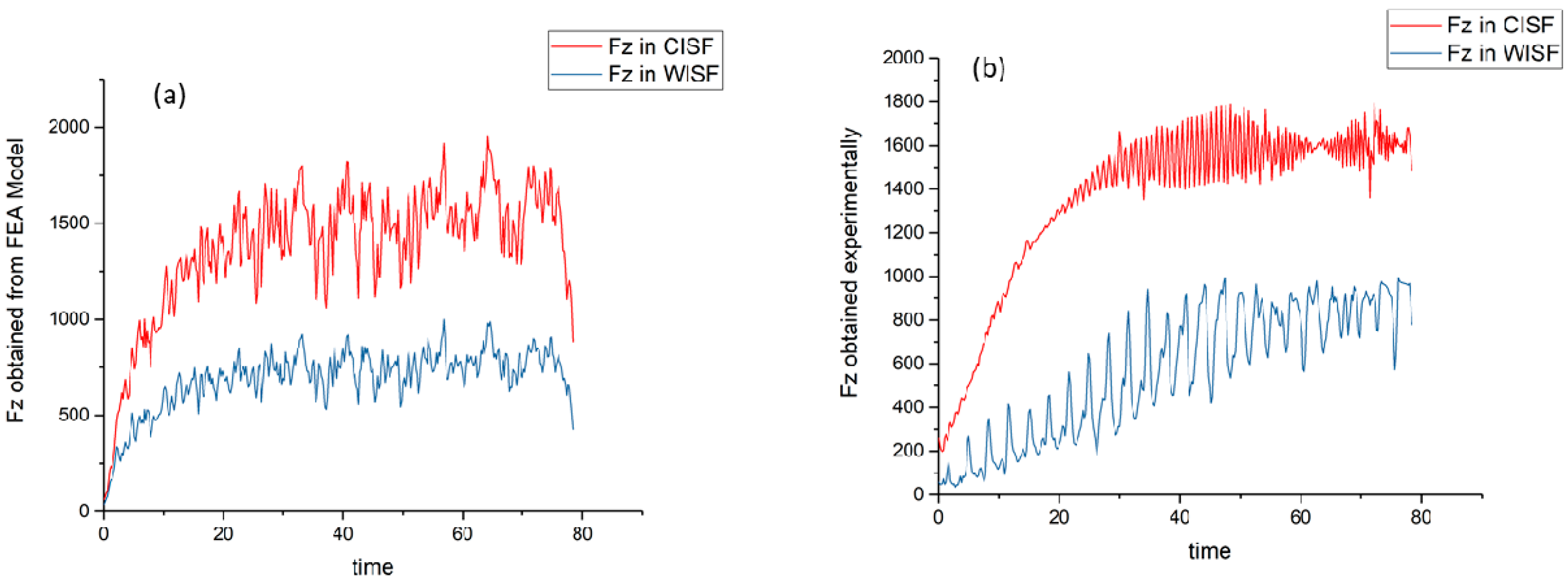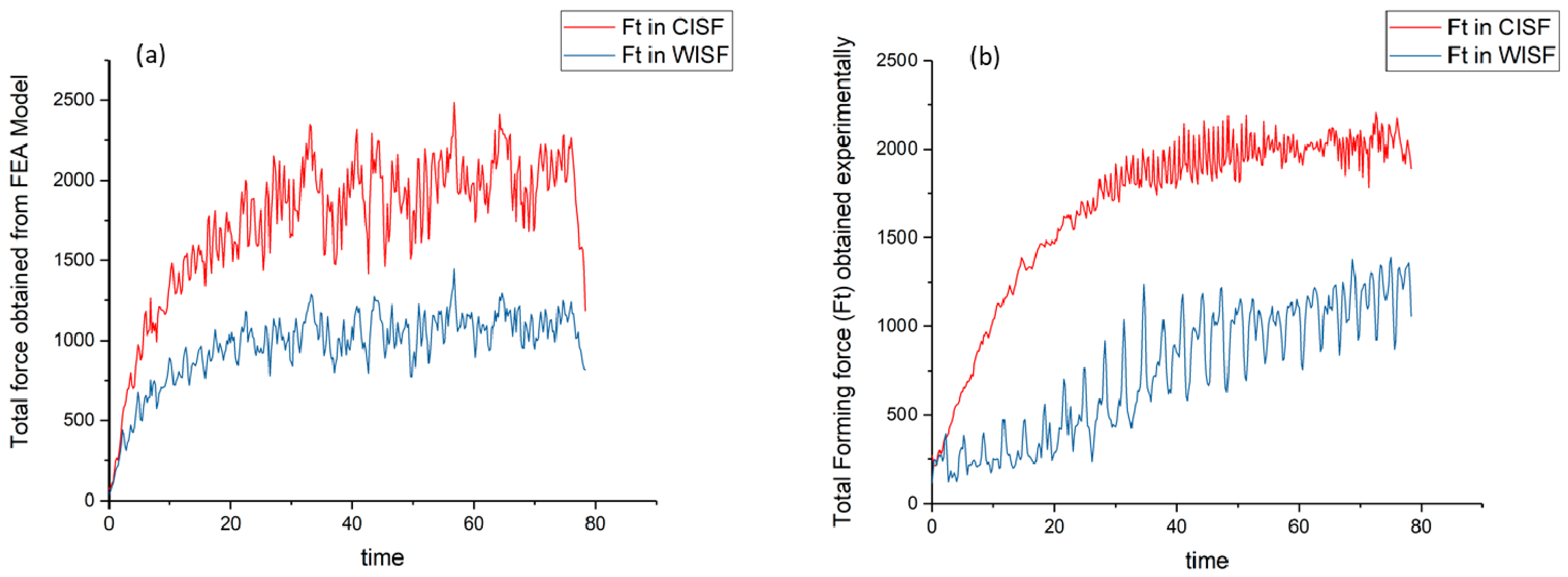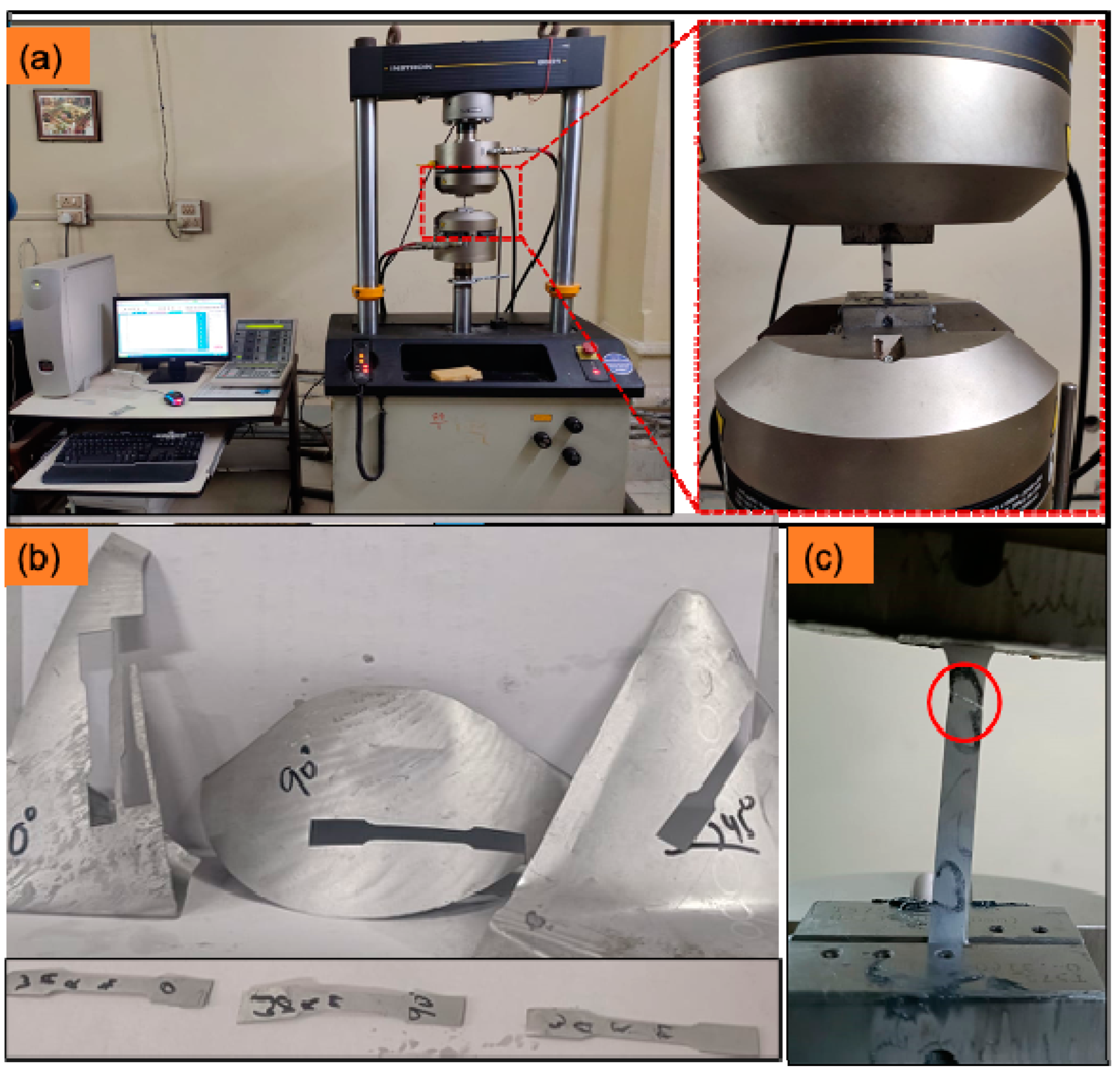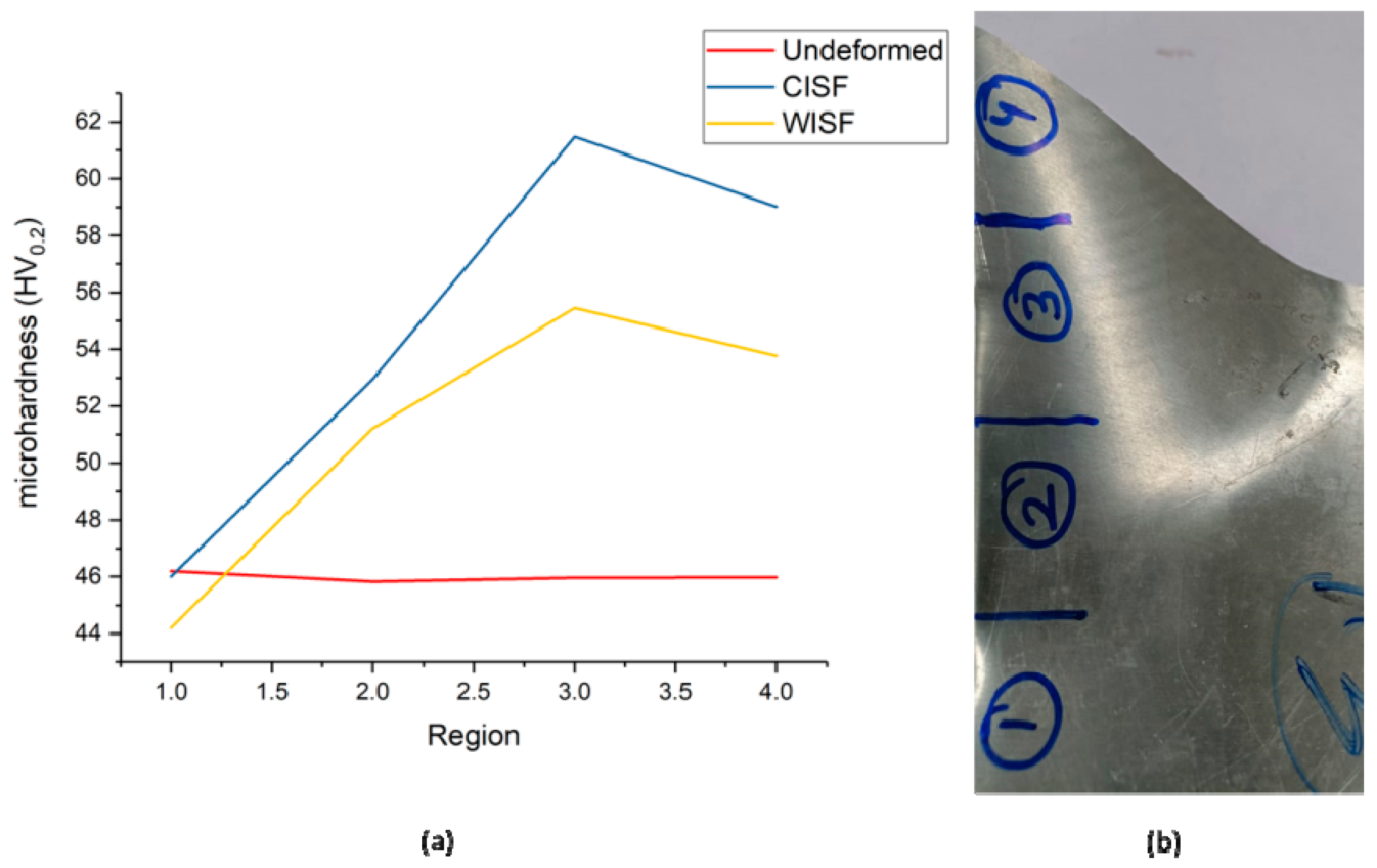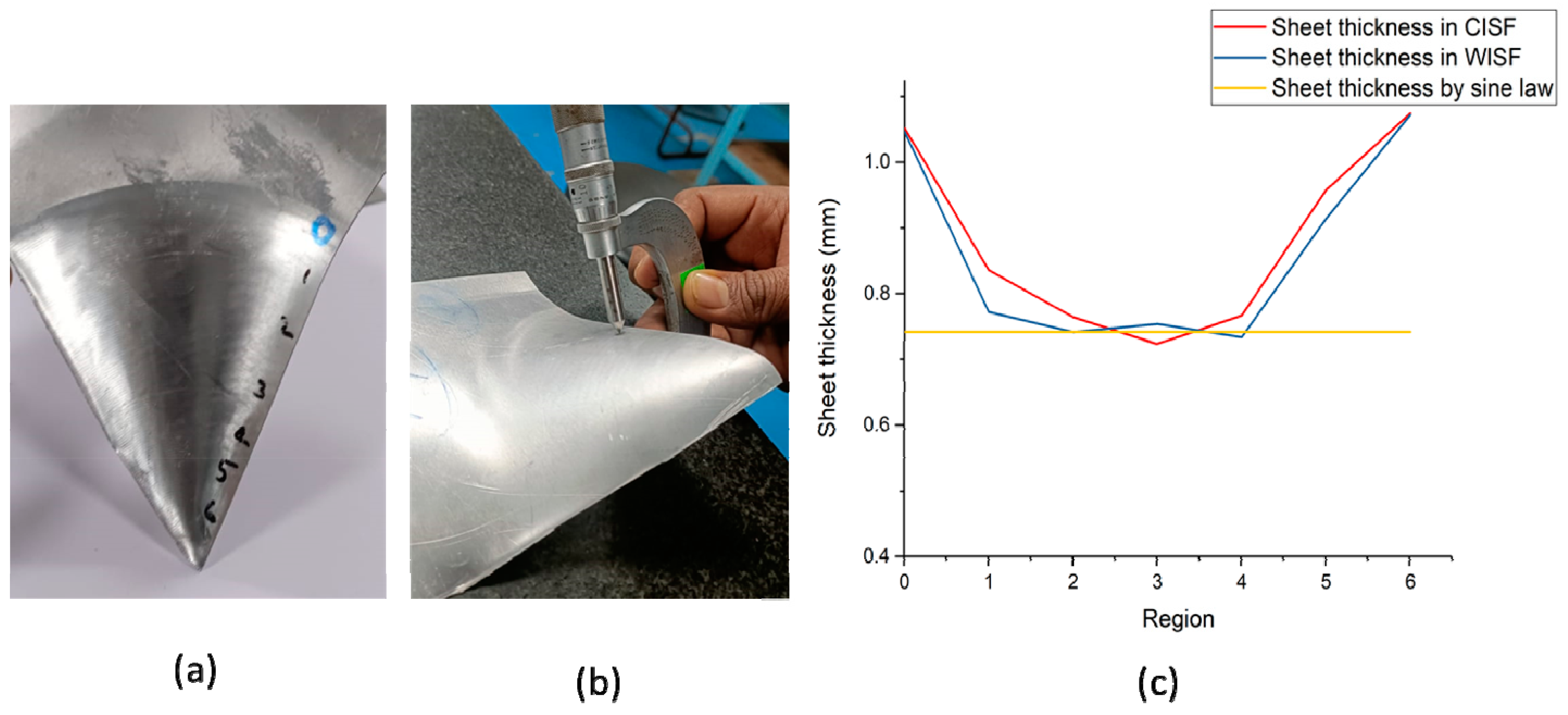1. Introduction
Incremental sheet forming is a non-conventional process of sheet forming in which no dedicated dies are used for sheet forming. This process is specifically helpful for small batch production of complex three-dimensional shapes. The concept of this process is directly based on additive manufacturing and 3D printing, which are widely used globally. In this process, a sheet is formed in a stepwise manner without using any dedicated dies; there are only partial dies. This process is also called dieless forming. The sheet is deformed in a stepwise incremental way where a small area undergoes deformation at a time, and the deformation moves over the entire product. Deformation in ISF is gradual, localized, and incremental, which are found to be responsible for increased limiting strain.
Additionally, due to localized contact between the sheet and tool, the friction is also less, and more strain is induced before the onset of necking. This process has attracted the aerospace, automotive, and biomedical sectors to manufacturing complex sheet metal components [
1,
2]. This process was used by Iseki et al. [
3] for small batch production of non-symmetrical shallow shells using path-controlled spherical rollers [
4] in the last two decades. In this process, necking is either suppressed or delayed, resulting in higher strains than in conventional stamping, deep drawing, and stretching processes [
5]. In addition to this, there are other advantages over traditional forming methods:
(a) The process does not require dedicated dies, and the setup cost can be vastly reduced.
(b) The degree of flexibility of the process is relatively high as different shapes are formed by changing the tool path. New profiles are quickly produced by changing the programming for the tool path.
(c) The deformation zone in ISF is confined, due to which stress becomes localized and enhanced formability is achieved. The uniformity of thickness throughout the deformed region is one of the critical factors in improving the formability of sheet metal forming processes. Kim and Park demonstrated that shear deformation is one factor for improved product formability [
6,
7].
(d) The process of ISF forms the basis for rapid prototyping because of its stepwise deforming nature.
(e) The process is energy-efficient, and the products can be recycled. Therefore, it becomes a robust process for small batch production in the automotive, aerospace, and biomedical sectors.
Researchers claim that in the ISF process, more formability in the sheet is observed due to the complex nature of the stress state involving shearing, stretching, bending under tension, and cyclic straining, which leads to uniform strain distribution in the sheet undergoing deformation. Emmens and Boogaard [
8] found strains in ISF much higher than in conventional processes such as deep drawing, stretching, and stamping. The enhancement of formability is due to the localized nature of deformation because of the small tool–sheet contact area, which leads to the suppression or delay of necking. Emmens and Boogard also concluded that formability is enhanced in ISF due to the stresses’ complex nature. There were six factors: contact stress, bending under tension, shear, cyclic straining, the geometrical inability of the neck to grow, and hydrostatic pressure related to ISF. Among these, contact stress, bending-under-tension, and shear localize the deformation, whereas shear, cyclic straining, and the geometrical inability of neck growth postpone the unstable development of a neck [
8,
9].
To assess the formability of the sheet in ISF, the straight groove test proposed by Kim and Park has been used [
10]. Shim and Park [
11] used a straightforward groove test for formability analysis in ISF. A straight groove was made on the sheet marked with circular grid patterns, and the forming limit curve (FLC) was plotted for the same; a straight line with a negative slope in the region of positive minor strain was observed. The FLC for ISF was found to be above the FLC for conventional sheet metal forming processes. In the early years of ISF, the process was carried out using a 5/6 axis CNC machine; the tool path program was fed to the CNC machine drive, and the sheet was deformed to the shape according to the provided schedule. However, in the recent past, industrial robotic arms have been used to perform ISF, and the process is termed as Robot-Assisted Incremental Sheet Forming (RAISF). The process was patented by Tuominen [
12] in 2004. Since then, the use of Industrial Robotic arms has been frequently reported. Robotic arms offer various advantages over CNC machines in terms of better speed control, higher accuracy, and a larger workspace. Mohanty et al. [
13] used RAISF for forming steeper wall angles, providing tilt and rotation to the part, and found that giving a slant to the amount to be fabricated leads to a higher forming grade [
13,
14,
15].
Numerous attempts have been made to improve the quality of the product formed by ISF. Various factors affect ISF such as forming force, formability, spring back, and surface finish. Gatea et al. [
9] presented a detailed review of the effect of process parameters in ISF. They analyzed the impact of various parameters, temperature, number of stages in forming, tool diameter, step size, and feed rate, on the formability, accuracy, and spring back in the formed product. Temperature plays a very significant role in ISF, and generally, temperature positively affects formability in the ISF process. Several works have been carried out to deform sheets in warm and hot conditions. The setup is provided with an additional heating arrangement to achieve better formability. Duflou et al. [
16] developed a laser-assisted ISF machine in which arrangements were made for the local heating of the sheet using a 500 W ND-YAG laser. It was discovered that both forming force and spring back were reduced. In addition to these, the residual stress was also found to be reduced in the case of laser-assisted ISF.
Similarly, Gottmann et al. [
17] used a 10 kW fiber-coupled diode laser emitting laser light coaxially aligned with the forming tool, and the deformation was performed with simultaneous heating of the sheet. The sheet of Ti-6Al-4V was deformed, and the final depth was more than that of cold forming. Fan et al. [
18] used an electric current heating system to deform magnesium alloy. They observed a maximum formability of 64.30 at a present value of 500 A and a feed rate of 1000 mm/min. Too low a feed rate causes sheet burning, whereas, at too fast a feed rate, there is not enough time to soften the sheet. It was also found that with a small tool diameter (<6 mm), the heat causes localized burning of the sheet, and with a giant tool diameter, heat becomes spread, and proper heating of the sheet does not occur. Palumbo and Brandizzi [
19] used static heating with high spindle speeds to deform Ti sheets. High spindle speed is found to stabilize the neck. They deformed a Ti sheet at a temperature of 400 °C and used it for manufacturing the car doors.
Similarly, Najafabady and Ghaei [
20] used hot incremental forming (HISF) to deform the Ti-6Al-4V sheet to a basic conical and pyramidal shape, and observed the effect of different process parameters on the dimensional accuracy, surface quality, and work hardening of the fabricated workpieces. There was a deviation from the ideal geometry, which was found to be maximum at the tip and considerably decreased a few millimeters away from the tip. The roughness of the inner surface, where the tool contacted the workpiece, was greater than that of the outer surface. Micro-hardness showed that the hardness increased from the flange to the vertex of the workpiece, where more considerable plastic deformation and, hence, more work hardening is expected to occur.
Similarly, Al-Obaidi et al. [
21] used the setup with induction heating to deform DP 980 sheet, DC04 steel sheet, and 22MnB5 steel to achieve a high degree of deformation. Ambrogio et al. [
22] used HISF on aluminum AA2024-T3, magnesium AZ31B-O, and titanium Ti6Al4V alloys. The molybdenum disulfide MoS2 was used as a lubricant in all the experiments. They noticed an increase in the formability by local heating of the sheet. As a result, the formability of the aluminum AA2024-T3 increased from 300 to 600, the final formability of magnesium AZ31B-O was found to be 400, and the formability of Ti6Al4V rose from 200 to 450. The surface finish was found to be reduced with the increase in wall angle. Singh et al. used radiation heating to locally heat the Al 1050 sheet. They found a delay in fracture and intensification of the formability with the elevated-temperature incremental forming process compared to that of the incremental forming process at room temperature [
23]. Wankhede et al. [
24] fabricated an Al 2016-T6 sheet at an elevated temperature of 250 °C using a coil for local heating and found a 956% rise in sheet formability. Kumar et al. [
25] used radiation heating to perform ISF on CP titanium grade 2 sheet, and an FE simulation and experimental work were used to investigate the process capabilities of a CP-Ti Grade-2 sheet formed through warm incremental sheet forming (WISF) in terms of thickness distribution, forming forces, geometrical accuracy, and surface roughness. They found increased formability, reduced forming forces, and better thickness distribution in the case of ISF at an elevated temperature of 100 °C [
26].
HISF has advantages over cold ISF in terms of reduced force and better formability. It can be used for Ti and Mg sheets whose formability at room temperature is less. However, performing ISF at high temperatures has some associated drawbacks; hot ISF requires sophisticated arrangements to be mounted on the ISF setup. Performing ISF at high temperatures can affect the surface qualities of the formed product. While forming sheets of lower strength, it can be helpful to perform WISF to take advantage of both cold and hot ISF. Recently, WISF has been used to exploit its full potential. Ghiotti and Bruschi [
27] used WISF to fabricate Mg alloy AZ31B at 1500 and 2500 and found that fabricated parts had better formability. Azpen et al. [
28] used friction stir ISF on 6061-T6 aluminum alloy sheets and concluded that tool diameter influences surface roughness. Zhang et al. [
29,
30] used oil bath heating to perform WISF on the AZ31B sheet. They found that the most significant factors affecting the formability are forming temperature, step depth, and sheet thickness in decreasing order. Bouhamed et al. also discussed the formability of functionally graded materials formed by single-point incremental forming [
31]. Said et al. [
32] discussed the numerical simulation and their single-point tool path generation incrementally formed shapes.
In contrast, tool diameter is a non-significant factor in WISF. The same trend was observed for spring back as well. Recently, Mohanraj et al. [
33] performed WISF on magnesium AZ31 and aluminum 6061 alloys and achieved better formability and an exact shape at 300 °C.
From the above literature survey, it is clear that temperature plays a significant role in ISF. It positively affects ISF in terms of improved formability, decreased force, and better accuracy of the formed product. The current work compares cold incremental sheet forming (CISF) and WISF using a simulation on ABAQUS. After successfully simulating both processes on Abaqus, incremental cold sheet forming (CISF) and WISF are performed using a six-axis industrial robotic arm. They are named robot-assisted cold incremental sheet forming (RACISF) and robot-assisted warm incremental sheet forming (RAWISF). The path planning is performed by online programming using a teach pendant. Several shapes are made, and the initiating force, mechanical properties using the uniaxial tensile test, microhardness, and surface finish are compared. It is found that RAWISF shows better process capabilities than RACISF does.
